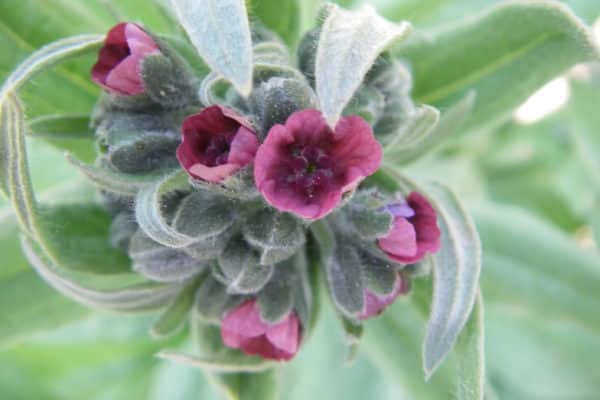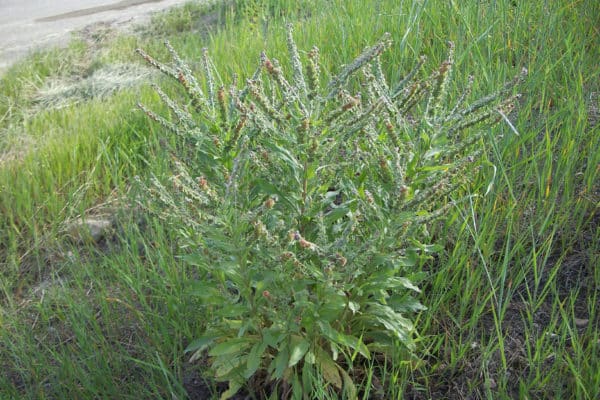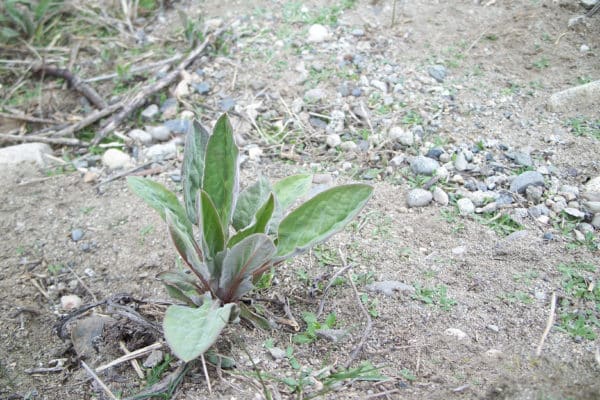Hound’s tongue
Warning
Hound’s tongue is toxic to cattle, deer, pigs, horses, and goats.
About This Species
Hound’s tongue (Houndstooth, Dog’s tongue) grows on dry, well-drained sites such as roadsides, pastures and disturbed soils. It was unintentionally introduced from its native range in Europe. Each plant can produce 2,000–4,000 barbed seeds per year that cling to clothing, livestock, and wildlife. This plant is poisonous to wildlife and livestock if ingested. Hound’s tongue is designated as a Provincial Noxious Weed by the BC Weed Control Act.
How to Identify
Hound’s tongue is an invasive plant that can grow up to 1.5 m tall with hairy, upright stems.
Flowers are a dull red-purple with five petals each. Each flower produces four rounded-triangular seeds covered with hooked prickles.
First year Hound’s tongue plants form a rosette with flopping leaves that resemble the shape of a dog’s tongue. In the second year, mature plants develop rough, hairy, wide leaves.
Take Action
Preventing flowering and removing seeds from clothing and pets in place where the seeds are found is the best way to prevent this plant’s spread. Hand-pull plants and/or remove flowering stems before seeds appear.
-
If you need advice about invasive species on your property or you are concerned about reported invasives in your local area, contact your local government or regional invasive species organization.

PlayCleanGo
Learn about best practices
REPORT TO PROTECT BC’S BIODIVERSITY

Use the app
Observe and report to protect BC’s biodiversity

Report through this website
Use our form to tell us what you’re seeing and where.


















